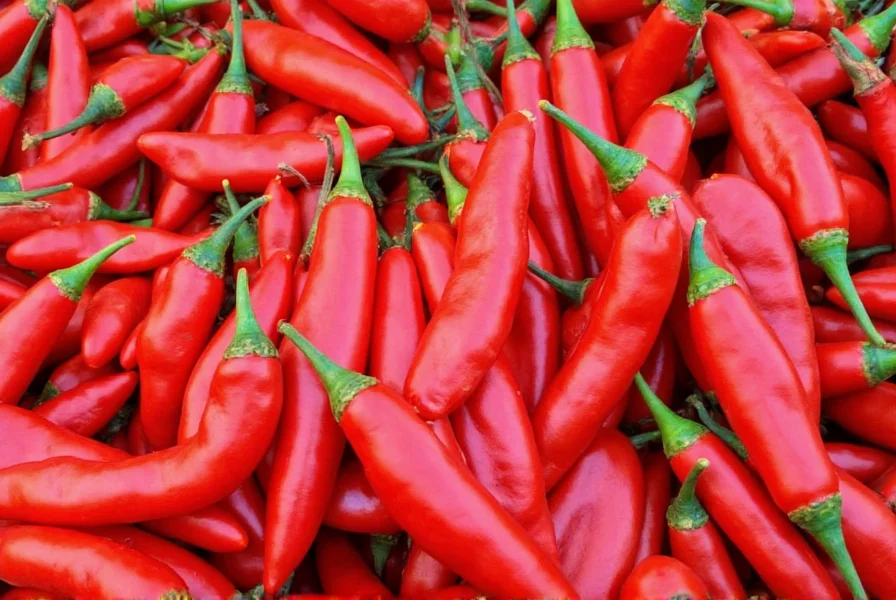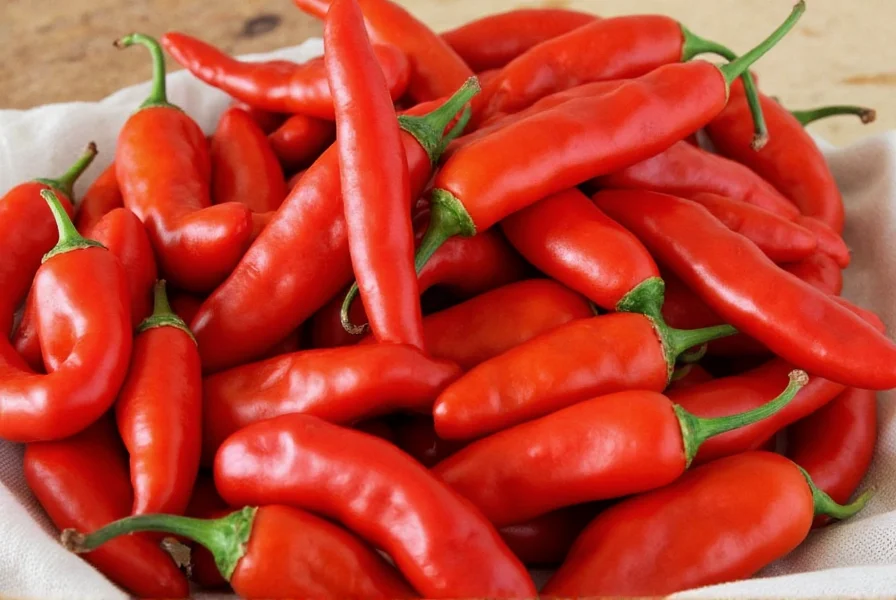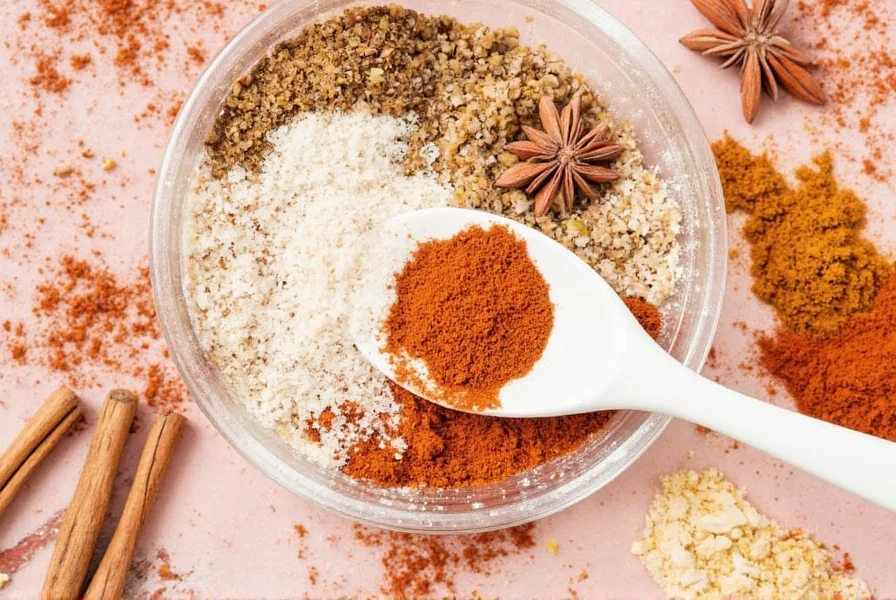Table of Contents
Introduction to Cayenne Green Pepper
Cayenne green pepper is a fresh, unripe chili pepper typically measuring 30,000–50,000 Scoville Heat Units (SHU), making it significantly hotter than jalapeños but milder than habaneros. This vibrant green pepper offers a bright, grassy flavor with moderate heat and is widely used in global cuisines for sauces, marinades, and spice blends. Unlike its red counterpart, the green version provides a cleaner heat profile ideal for dishes requiring subtle spiciness without overwhelming flavor dominance.
Heat Level & Scoville Scale
Cayenne green peppers consistently rank between 30,000–50,000 SHU on the Scoville scale. This places them in the medium-to-high heat category, where:
- 30,000 SHU: Mild heat (similar to a very spicy jalapeño)
- 50,000 SHU: Intense heat (approaching habanero territory)
Key factors affecting heat level:
- Ripeness: Green peppers (unripe) are typically at the lower end of the range
- Growing conditions: Soil type and climate impact capsaicin concentration
- Preparation method: Dried cayenne powder is 20–30% hotter than fresh peppers

Practical Cooking Tips
Maximize flavor and safety with these expert techniques:
- Heat control: Start with 1/4 teaspoon of dried powder per dish, then adjust. For fresh peppers, remove seeds and white membranes to reduce heat by 50%
- Pairing strategy: Balance heat with dairy (yogurt, sour cream), fats (avocado, olive oil), or sweet elements (honey, mango)
- Preparation methods:
- Raw: Thinly slice for salsas or salads (best for bright, fresh heat)
- Roasted: Char over open flame for smoky depth in sauces
- Dried: Dehydrate at 135°F (57°C) for 12–24 hours to preserve flavor
- Storage hacks: Freeze whole peppers in airtight bags for up to 6 months. For immediate use, store in a perforated plastic bag in the refrigerator crisper drawer
How to Choose & Store Cayenne Green Pepper
Selection checklist for fresh peppers:
- Color: Vibrant emerald green (no yellowing or browning)
- Firmness: Should feel solid with slight give when squeezed
- Texture: Smooth, glossy skin without wrinkles or soft spots
- Stem: Green and fresh-looking (brown stems indicate age)
For dried powder:
- Look for bright red-orange color (not dull brown)
- Check for uniform texture (no clumps or grit)
- Verify SHU range on packaging (30,000–50,000 for standard cayenne)
| Pepper Type | Heat Level (SHU) | Flavor Profile | Best Culinary Uses |
|---|---|---|---|
| Cayenne Green Pepper | 30,000–50,000 | Bright, grassy, clean heat with subtle sweetness | Hot sauces, salsas, marinades, spice rubs |
| Jalapeño | 2,500–8,000 | Grassy, vegetal with mild fruitiness | Guacamole, stuffed peppers, nachos |
| Habanero | 100,000–350,000 | Fruity, floral with intense, lingering heat | Tropical salsas, Caribbean jerk seasoning |
| Chipotle | 2,500–8,000 | Smoky, earthy with medium heat | Barbecue sauces, stews, mole |

Frequently Asked Questions
What's the difference between cayenne green pepper and red cayenne pepper?
Cayenne green pepper is the unripe version of the cayenne pepper plant. As it matures, it turns red and develops a sweeter, more complex flavor profile. Green cayenne has 20–30% less heat than fully ripe red cayenne, with a cleaner, grassier taste ideal for dishes where you want spice without overwhelming flavor. Red cayenne is preferred for dried powders and intense heat applications.
How do I safely handle cayenne peppers without burning my skin?
Always wear food-safe gloves when cutting or seeding. If gloves aren't available, use tongs and wash hands immediately with soap and water. Never touch your eyes or face during preparation. If capsaicin contact occurs, wash affected areas with milk or vegetable oil (capsaicin is fat-soluble) rather than water. For severe irritation, use rubbing alcohol to dissolve the oils.
Can cayenne green pepper help with weight loss or metabolism?
Research shows capsaicin in cayenne peppers may temporarily increase metabolic rate by 5–8% and promote fat oxidation. A 2023 study in the Journal of Nutritional Science found participants consuming 1.5g of cayenne pepper daily experienced increased calorie burn during exercise. However, effects are modest and should be combined with diet and exercise for meaningful results. Always consult a healthcare provider before using for therapeutic purposes.
What's the best way to make homemade hot sauce with cayenne green pepper?
Combine 1 cup chopped cayenne green peppers, 1/2 cup apple cider vinegar, 2 cloves garlic, 1 tsp salt, and 1 tbsp honey in a saucepan. Simmer for 10 minutes, then blend until smooth. Strain through a fine-mesh sieve for smooth texture. Store in sterilized glass bottles in the refrigerator for up to 3 months. For thicker sauce, reduce liquid by simmering longer.
How long do fresh cayenne green peppers last in storage?
Properly stored fresh cayenne green peppers last 10–14 days in the refrigerator's crisper drawer when kept in a perforated plastic bag. For longer storage:
- Freezing: Wash, dry, and freeze whole or sliced in airtight bags for up to 6 months
- Drying: Dehydrate at 135°F (57°C) for 12–24 hours until crisp, then store in airtight containers
- Pickling: Submerge in vinegar brine for shelf-stable preservation (lasts 6+ months)
Are cayenne green peppers safe for people with acid reflux?
While capsaicin can irritate the digestive tract, studies show mixed effects. A 2024 review in Gastroenterology Research found that moderate cayenne consumption (under 1g daily) may actually reduce stomach acid production over time. However, individuals with active GERD or ulcers should avoid cayenne during flare-ups. Start with tiny amounts (1/8 tsp) and monitor symptoms. Always consult a gastroenterologist for personalized advice.
Conclusion
Cayenne green pepper offers a versatile heat profile that enhances dishes without overwhelming flavor. With proper handling techniques and strategic pairing, it becomes an invaluable kitchen tool for adding complexity to everything from salsas to marinades. Whether you're a spice novice or seasoned chef, understanding its unique characteristics—from Scoville range to storage methods—ensures you harness its full potential safely and effectively.











 浙公网安备
33010002000092号
浙公网安备
33010002000092号 浙B2-20120091-4
浙B2-20120091-4